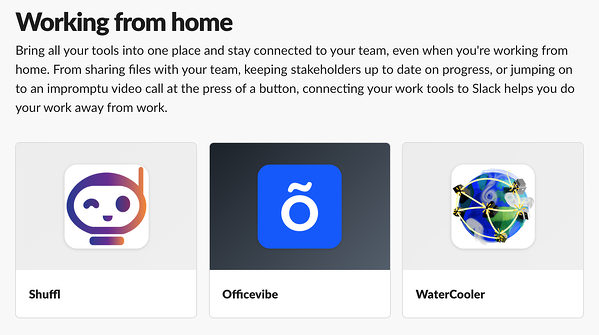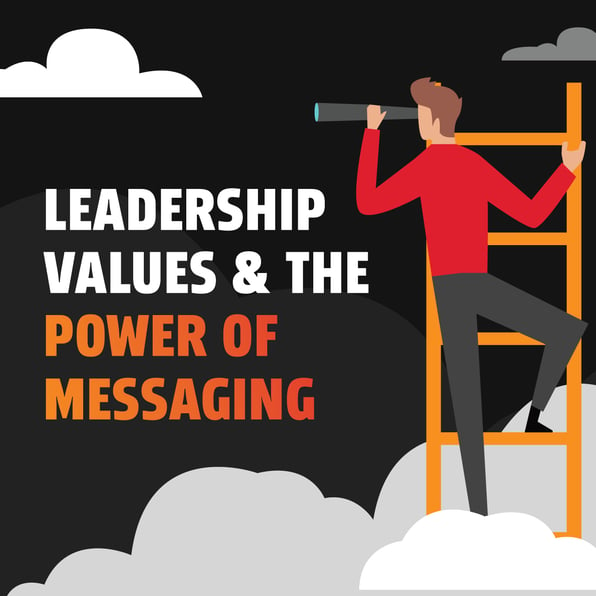2020 has been an unpredictable year—and that’s putting it lightly. With the COVID-19 pandemic that's turned the world upside down, suspended outdoor life for the foreseeable future, triggered the remote work explosion, and disrupted economic activity across several industries, there’s a lot to be concerned about.
The new normal has created a paradigm shift in customer behaviour across numerous industries— especially in the software space.
For example, digital communications apps like Zoom, Slack, and Microsoft Teams are exploding in usage and delivery businesses are witnessing record growth figures while brick and mortar businesses have taken a significant hit.
Owing to the countless lifestyle changes we’ve all had to make, customer behaviour has changed drastically. Your buyer personas have undergone the following three fundamental changes in 2020:
- Some buyer budgets have taken a hit while others have spiked
- More and more of your ideal buyers are operating remotely
- Tech has seen explosive growth in day-to-day life
You'll need to evolve accordingly to stay relevant in the uncertain, remote-first, technology-driven future that awaits us in 2021.
So what can you to do keep up?
The smart course of action would be to adjust your buyer personas so your offerings can stay relevant to your ideal customers. This way, your business will not only survive the economic crunch but will find a way to thrive.
Here are three ways your buyer personas have changed in 2020 and simple guidelines to staying relevant despite the craziness.
Buyer budgets have changed drastically.
It's also been a polarizing year, in terms of revenue and otherwise.
On one hand, there are brick and mortar businesses who are hurting and need to cut costs to stay afloat.
On the other hand, tech businesses are breaking new grounds, growing more aggressively, or at least not experiencing the same losses as others.
Even if your buyer personas are not primarily in the software and tech niche, refreshing your buyer personas is a worthwhile undertaking.
The aim is to understand exactly how much your ideal buyers have to spend to find a way to remain relevant to them without taking a cut to your profits. Here are a few ways to determine how your buyer personas need to evolve, including a couple of questions to share with your team as you make the shift.
✅ Establish your ideal buyers budget.
How has our ideal buyers’ budget changed through 2020? Has it increased or decreased?
Understanding how your ideal buyers' budget has changed will give you a better idea of how much value they're expecting, and help you design a plan to keep meeting their needs.
✅ Determine a strategy to address shrinking budgets.
Do we intend to chase customers with a shrinking budget? If yes,
✅ Reinforce your value proposition to lower budget prospects.
How can we amplify our product/service offerings to stay relevant to our ideal personas with a shrinking budget? How do we tie this into our growth strategy?
For example, countless SaaS businesses, like HubSpot and PandaDoc, un-gated several of their premium product offerings at freemium rates, or significantly lower prices to stay competitive despite changing budgets.
✅ Rework your personas to speak to the needs of higher budget customers.
How can we highlight our value proposition to clients who have more budget? How can we offer more value and capture more budget dollars?
Analyzing how your ideal buyers’ budget has changed is the first step in discovering how you can stay relevant to them going forward.
buyers have shifted to remote work.
If there’s anything we can give the new normal credit for it’s the recent remote working explosion.
By expert estimates,
remote working milestones
have gone through the roof as millions of businesses around the globe are forced to pivot to 100% remote operations.
So, how does that affect you?
✅ If you're primarily an offline business, you may need to pivot.
Is our product/service primarily targeted at in-office users?
It might be time to take a long, hard look at your value proposition. You can either adjust to stay relevant, or refocus your buyer personas to make sure you’re relevant to the niche you’re targeting.
✅ Determine just how much of your sales depends on in-person meetings.
How much does our business depend on in-person sales meetings? How can we replicate the efficacy of these meetings in a socially distant format?
If a huge part of your sales process depends on meeting prospects in person, now would be a good time to adjust your strategy and incorporate a remote-first meeting culture.
✅ Define exactly how your offerings make sense in the new normal.
How does our product/service offering fit into our potential buyers’ new reality?
Your potential buyers are embracing remote working as a way to stay afloat no matter what. To stay relevant and competitive, your approach needs to change to embrace your potential buyers’ transforming culture, needs, and unique challenges.
For example, a catering company that services in-person corporate functions can adapt to remote culture by offering home delivery for virtual conferences.
Revisit your personas to ensure these changes are reflected, so your product/service offerings can flow in sync with your potential buyers’ new normal.
Technology plays an integral role in buyers' lives
Who’d have guessed that before the year was over we’d have kids playing pranks on teachers via Zoom?
Or that we’d be having video meetings with coworkers joining in with dorky backgrounds from their favourite cartoons?
Or that you’d have learnt 27 Slack shortcuts before the year was over?
Nobody.
But here we are.
Our world is changing and tech is playing a more significant role in our daily life. Likewise, your ideal buyers are depending more and more on technology.
So how can you leverage the use of technology to add value for your buyers?
One, you could either pivot your business to fit into the lives of your more tech-savvy buyers.
Even better, you could update your buyer personas to focus on a more specific, well-defined niche in your field. This option is your lowest hanging fruit since you wouldn’t have to make costly changes to your product, wrangle lines of code, and refresh everything from the start.
Doing this would require a comprehensive buyer persona audit aimed at uncovering how your ideal buyers' are interacting with tech in the new normal.
As such, it's important to:
✅ Determine how tech-savvy your ideal personas are.
How tech-savvy are our personas? Has the changing role of tech helped to grow their knowledge?
A better understanding of how much knowledge your ideal personas now have about tech will help you define you scope, determine how easily you can connect with and communicate the value of your offerings to them.
✅ Be inclusive of buyers that are becoming increasingly dependant on technology.
How has technology influenced the needs and preferences of our ideal buyers? How can add value as buyers transition into a more technology-dependent lifestyle?
Your buyer personas should include a strategy to fit in comfortably with your buyers' day-to-day use of technology. Even technology-based businesses, like software companies, should consider what consumers expect from them in the new normal (ie. increased integrations, a more mobile-friendly interface, etc.)
Slack takes it up a level by featuring an entire category for remote work tool integrations.
✅ Design a SWOT strategy.
What strengths, weaknesses, opportunities, and threats are arising for our ideal buyers, owing to the growing role of tech in their industry?
No matter what industry they're in, your customers are facing significant challenges this year. Using the SWOT format will help you to identify gaps in the market that your product can fill.

✅ If you offer a technology-based product, create a plan to cultivate brand loyalty.
Are our ideal buyers making (or planning to make) any significant changes in their tech stack? How can we become a resource to buyers in the new normal and beyond?
With so many buyers creating, modifying, and adding to their digital toolkit, technology-based companies have the opportunity to position themselves at the forefront of the digital shift. By considering questions your buyers might have as they add to their tech stack in your
content strategy, you can become a resource to your customers.
ClickUp's website features an extensive resource library with tools to suit every learning style, in every stage of the buyers journey. Without ever having to leave the ClickUp website, customers are empowered to make informed decisions and this facilitates trust between the brand and the buyer.
Your customers don't stay the same, so why should your buyer personas?
The aim here is not to radically transform your buyer behaviours (you can’t, anyway) or to adjust your service offering from the ground up to suit them.
Rather, the buyer persona refresh we’re suggesting will help you to pinpoint the buyers that you can still offer maximum value to without having to change their business model or yours.
More than just a customer-facing refresh, a buyer persona update brings you to clearer terms with the strengths, weaknesses, opportunities, and challenges your business will need to address to stay competitive in your niche.
Times are changing, and so are your customers. Give your personas a 2020 remodel with our
Buyer Persona Worksheet
.






